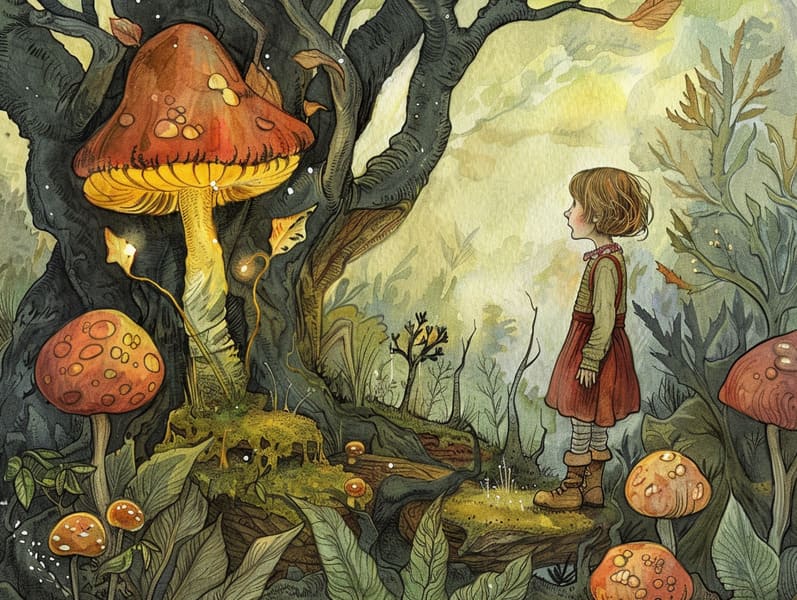The Emergence of Popular Fairy Tales and the Unceasing Charm.
The Emergence of Popular Fairy Tales and the Unceasing Charm.
Blog Article

Fairy tales for kids have timeless appeal. These tales have been told from one generation to the next centuries before they were ever put on paper. They originated from a variety of traditions, including Western traditions. They were initially disseminated among older generations, often carrying themes and messages concerning the societal norms and beliefs of the time.
The renowned Brothers Grimm, Jacob and Wilhelm Grimm, were among the first to compile and release many of these beloved stories. Their collection, "Grimm's Fables," included narratives like "The Little Glass Slipper," "The Story of Hansel and Gretel," and "Little Snow White," which have since become classics in the world of timeless fairy tales. Similarly, H. C. Andersen's fantastical narratives, such as "The Mermaid," and "The Ugly Duckling," have won hearts worldwide, guaranteeing their place in the pantheon of classic fairy tales.
Despite being ancient, these stories remain as meaningful as ever, especially as bedtime stories for kids. These charming stories are now available in multiple formats, including artistically illustrated books, magical animations, and web-based fairy tales.
Their continued relevance can be traced to several charming aspects:
Key Lessons: Traditional fairy tales often whisper important moral lessons. Stories like "The Wolf and the Liar" teach the virtue of sincerity, while "The Story of the Tortoise and the Hare" underline the values of perseverance and humbleness. These stories offer the young clear distinctions between right and wrong, developing their moral compass in a tender yet profound way.
Compassion and Insight: Ancient fairy tales frequently feature heroines facing challenges and problems, motivating listeners to identify with their struggles and champion their triumphs. For instance, "The Story of Beauty and the Beast" emphasizes the importance of seeing inner beauty to appreciate the true essence of a character, developing kindness and discernment.
Cultural Knowledge: Many old fairy tales are rooted in the cultural contexts from which they came. Immersing in these stories can provide enlightening views into different ways of life, strengthening a sense of global understanding and awareness.
Imagination and Innovation: The extraordinary elements in ancient fairy tales—magical beings—fuel children’s dreams. These narratives move readers to fantasy realms, revitalizing inventive thinking and a sense of mystery that endures a lifetime.
Timeless fairy tales are not only charming but also informative. They work as bewitching tools in developing various cognitive and emotional skills in young readers. When traditional fairy tales are spoken, they strengthen language acquisition by showing new word meanings and intricate sentence structures. This practice also enhances listening abilities and mental focus, as young ones follow the check it out story, eager to see what happens next.
Furthermore, exploring the themes and characters of old fairy tales can nurture evaluative skills and problem-solving abilities. Young ones are guided to detect patterns, forecast, and make sense of cause and effect. These talks also benefit kids communicate their thoughts and feelings, contributing to their emotional intelligence.
In today’s online age, the presence of online storybooks has made these narratives more available than ever. Online platforms and mobile apps give ample collections of children's fairy tales that can be browsed or played anytime, anywhere. Fairy tales spoken are particularly popular, making available an interactive way for kids to take part in these charming tales. Sound books and read-out-loud videos guide characters and settings to life, often augmented by spellbinding audio effects and soundtracks that enhance the narrative experience.
The lasting appeal of ancient fairy tales lies in their ability to adjust to modern times while preserving their essential themes. Contemporary reimaginings of these tales often present more varied figures and modern settings, making them pertinent to today’s audience. However, the basic principles of boldness, compassion, and impartiality remain unchanged, continuing to appeal to audiences of all ages.
Old fairy tales also offer a sense of contentment and closeness. They highlight a coherent narrative with a definite beginning, middle, and end, often ending with the conclusion of conflicts and the triumph of righteousness over wickedness. This reliability can be consoling for children, affording a sense of invariability in an unpredictable world.
Timeless fairy tales continue to enchant and enlighten new generations, maintaining their radiance and significance in modern society. As nighttime stories for kids, they afford a perfect blend of charm and enlightenment, supporting moral values, empathy, and creativity. The availability of digital storybooks and the commonness of fairy tales read aloud warrant that these classic fairy tales remain acquirable to new generations.
By keeping and spreading these stories, we continue to commemorate the rich tapestry of tales and cultural heritage. Whether you are exploring a artistically illustrated book, exploring a electronic collection, or playing an audio story, the radiance of Grimm's fairy tales is always within reach. These tales point out of the unchanging force of tales and its ability to bind us across centuries and lands.
Whether you are exploring a artistically illustrated book, perusing a electronic library, or hearing an voice book, the delight of traditional fairy tales is always within reach.
These tales illustrate of the continued force of stories and its ability to unify us across time and space, making a tie that enchants and educates alike.